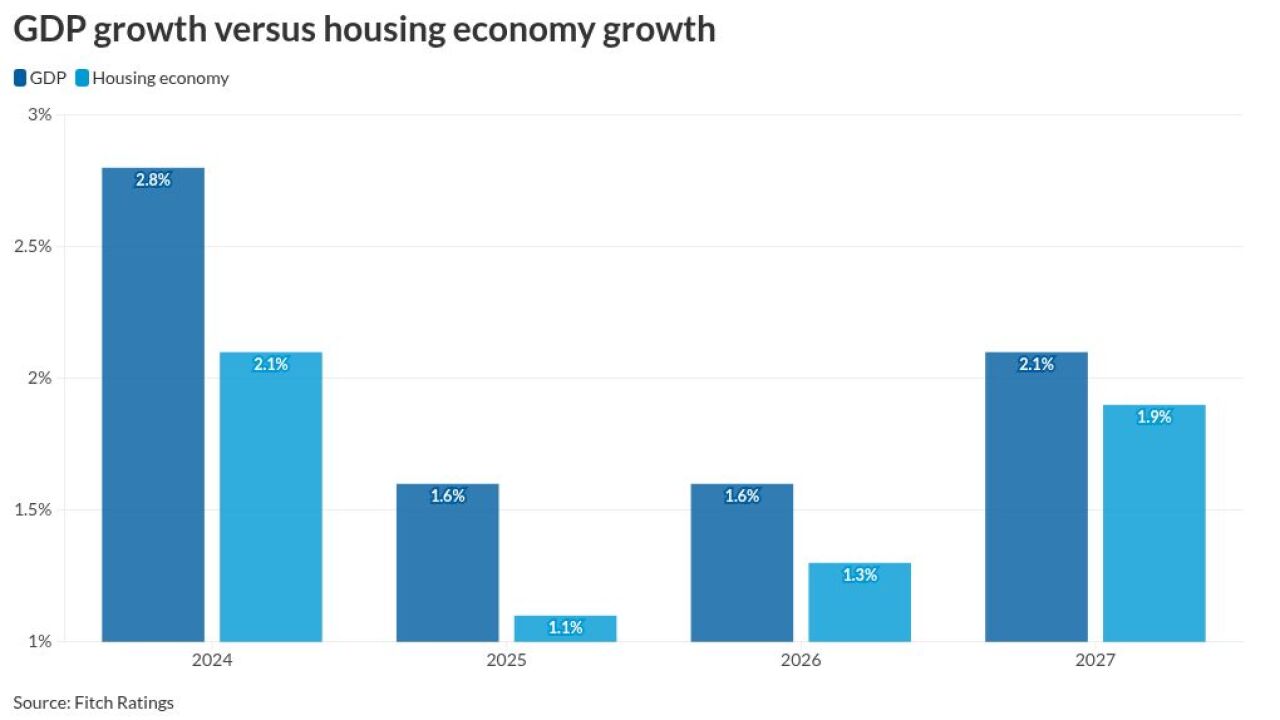The volatile mortgage rate environment in the fourth quarter last year did not impact the quality of closed applications, with critical defects falling to their second lowest level on record, Aces Quality Management found.
"Lenders made meaningful progress in loan quality in 2024, closing the year with one of the lowest quarterly critical defect rates we've ever observed," said Aces Executive Vice President Nick Volpe, in a press release. "However, continued volatility across the legal/regulatory/ compliance and insurance categories, as well as within the income/employment eligibility subcategory, highlights the importance of ongoing diligence in quality control efforts."
What happened with defect rates
For the quarter, the critical defect rate was 1.16%, compared with 1.51% for the third quarter and
The full year defect rate was 1.52%, compared with 1.68% in 2023 as the fourth quarter decline balanced out that spike.
During September,
But from the end of the third quarter through Nov. 21, the rate rose to 6.84%, before dropping back to 6.6% three weeks later. It ended the year at 6.91%.
The number of defects typically increases when rates do, as lenders want to generate volume and thus might overlook some items. Alternatively, defects can increase in times of rising volume as the crush on underwriters impacts their ability to deeply examine files.
Verifications not the top finding in 4Q
However, for the first time in three years,
Rather it was overtaken by legal/compliance/regulatory and tied with asset-related errors. Aces uses the Fannie Mae defect taxonomy in categorizing data; just because an application
The legal category has been the leading finding before, most notably between the third quarter of 2015 and second quarter of 2016, when lenders were implementing the TILA/RESPA Integrated Disclosures.
Meanwhile, income and employment has been a leading category since 2019, which Aces attributed to increased complexity in underwriting and verifications as a result of the Covid pandemic.
Legal and compliance critical defects were found in 22.58% of files Aces reviewed, followed by income/employment and assets in 16.13% each.
In the third quarter, 25% of files had income or employment critical defects, with assets second at 16.67%. For that quarter, legal/regulatory/compliance ranked 6th at 6.82%.
For the full year, income and employment verification defects were found in 27.64% of reviews, with assets at 23.19%.
Why insurance defects are cropping up
When it comes to insurance-related defects, Aces continued a theme from the third quarter
Historically, insurance has a less than 1% share of defects. But this spiked to 8.11% in the first quarter last year. It has since backed down but remains at levels above the norm, at 3.23% for the fourth quarter.
"Rising costs and coverage gaps have begun to impact loan qualification and closings, with borrowers' debt-to-income ratios occasionally exceeding allowable thresholds once updated insurance premiums are factored in," Aces said. "These disruptions can lead to delayed or failed closings, placing additional pressure on both originators and borrowers."
Defects by mortgage purpose and product
While refinance transactions made up about 13.7% of fourth quarter reviews, these accounted for 17.2% of files with defects. For purchase, it was 86.3% and 82.2% respectively.
By product type, conventional loans were over 66% of reviews with a 64.5% share of defect findings. Federal Housing Administration mortgages were 21.4% of reviews and 25.8% of defects. Veterans Affairs had





